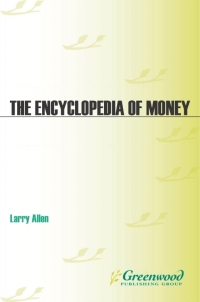Question
1. Pam Wedel borrowed $15,000 to pay for her childs education at Riverside Community College. Leslie must repay the loan at the end of 8
1. Pam Wedel borrowed $15,000 to pay for her childs education at Riverside Community College. Leslie must repay the loan at the end of 8 months in one payment with 4.25% interest.
a. How much interest must Leslie pay? (Do not round intermediate calculation. Round your answer to the nearest cent.) b. What is the maturity value? (Do not round intermediate calculation. Round your answer to the nearest cent.)
2. On September 12, Jody Jansen went to Sunshine Bank to borrow $2,900 at 8% interest. Jody plans to repay the loan on January 27. Assume the loan is on ordinary interest. (Use Days in a year table.)
a. What interest will Jody owe on January 27? (Do not round intermediate calculations. Round your answer to the nearest cent.) b. What is the total amount Jody must repay at maturity? (Do not round intermediate calculations. Round your answer to the nearest cent.)
3. Gordon Rosel went to his bank to find out how long it will take for $1,000 to amount to $1,250 at 10% simple interest. Calculate the number of years. (Round time in years to the nearest tenth.)
4. Lucky Champ owes $168.30 interest on a 6% loan he took out on his March 17 birthday to upgrade an oven in his Irish restaurant, Luckys Pub and Grub. The loan is due on August 17. What is the principal? (Use 360 days a year. Do not round intermediate calculations.)
5. Max Wholesaler borrowed $12,000 on a 8%, 120-day note. After 45 days, Max paid $4,200 on the note. Thirty days later, Max paid an additional $3,600. Use ordinary interest.
a. Determine the total interest use the U.S. Rule. (Do not round intermediate calculations. Round your answer to the nearest cent.)
b. Determine the ending balance due use the U.S. Rule. (Do not round intermediate calculations. Round your answer to the nearest cent.)
6. Shawn Bixby borrowed $18,000 on a 150-day, 11% note. After 60 days, Shawn paid $2,100 on the note. On day 90, Shawn paid an additional $4,100. Use ordinary interest. a. Determine the total interest use the U.S. Rule. (Do not round intermediate calculations. Round your answer to the nearest cent.) b. Determine the ending balance due use the U.S. Rule. (Do not round intermediate calculations. Round your answer to the nearest cent.)
Someone please help and explain these, I keep getting them wrong...
Step by Step Solution
There are 3 Steps involved in it
Step: 1

Get Instant Access to Expert-Tailored Solutions
See step-by-step solutions with expert insights and AI powered tools for academic success
Step: 2

Step: 3

Ace Your Homework with AI
Get the answers you need in no time with our AI-driven, step-by-step assistance
Get Started


